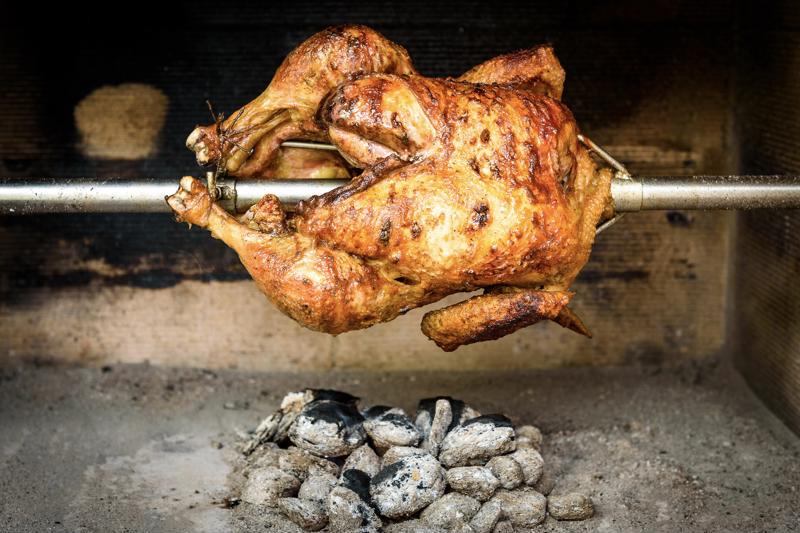Americans love their chicken. Consumption of the flightless bird has steadily increased over the past 20 years and is expected to reach a record high in 2019, according to the National Chicken Council.
But what about rotisserie chicken? As long as as this particular type of chicken haunted grocery-store shelves, it's carried a bit of a stigma as the "go-to and to-go meal for students and singletons," according to according to the magazine, Chatelaine. Everyone expects to see a rotisserie chicken at the supermarket, but few foodies ever really pay attention to it.
Until now. In recent years, appreciation for rotisserie chicken has seen something of a resurgence. In fact, acclaimed chef Matthew Koury recently opened a restaurant called Pop's Chicken on the Hill in Boulder, according to the Daily Camera. The star of Koury's menu is none other than a charcoal-fired rotisserie chicken. The culinary school-educated chef, who has worked in prestigious places such as Chicago's Signature Room, uses the spatchcock method. This entails removing the chicken's backbone so that it lays flat, and ultimately cooks faster and more evenly than it otherwise would.
So why is this reputable chef suddenly staking his success on a rotisserie? It's a good question, especially in the minds of culinary students studying in Boulder. And while the answer may not be 100% clear, this much is: the rotisserie chicken has taken flight.
One trendy bird
Koury isn't the only foodie paying attention to rotisserie chicken. Antoni Porowski from the hit Netflix show, "Queer Eye," has shown his appreciation for the readymade meal on more than one occasion. For instance, he uses it as a main ingredient in a season 4 episode, serving it with maple-roasted sweet potatoes and spaghetti squash.
Rotisserie chickens are also on the radar of many major food retailers. Costco, which famously charges only $5 for a rotisserie chicken, started building a massive facility in Nebraska in late 2018 to help it process more than 2 million chickens each week, according to NPR.
Even before rotisserie chickens became trendy, they were popular – albeit frowned upon by high-brow eaters. Rotisserie chickens are cheap, readymade meals that can be picked apart and used in a wide variety of dishes. They're simply seasoned and slow-roasted on a spit for several hours until they're fully cooked and ready to eat. This process can be expedited a bit with the aforementioned spatchcock method, which allows more of the chicken skin to be exposed to direct heat.
 The slow rotation helps cook the bird evenly in its own juices.
The slow rotation helps cook the bird evenly in its own juices.Cooking with rotisserie chicken
At Boulder-based Pop's Chicken on the Hill, rotisserie chicken is the main event. It can be bought in quarter bird and a half bird, and is usually served with sides such as macaroni and cheese, fries, rice or a salad.
But there's more than one way to use a rotisserie chicken. For example, you might take a page out of Antoni's book and used it in a creative pasta dish. Alternatively, you can use rotisserie chicken in a chicken salad seasoned with Sriracha, scallions and sesame seeds, like in this recipe from Thyme Bombe.
Other restaurants use rotisserie chicken in soups, casseroles, tacos, rice dishes, chicken pot pies and pulled-chicken sandwiches. Rotisserie chicken can also be flavored with buffalo or barbecue sauce and used as a pizza topping. There are literally hundreds of uses for rotisserie chicken in a recipe, which makes it one of the most versatile ingredients in the food industry. This dynamism definitely makes a rotisserie oven seem like a more worthwhile investment.
What's more, the versatility of a rotisserie chicken is a reminder to Boulder culinary arts students that, sometimes, even the most stigmatized meals can make the most important cameos on a menu.

